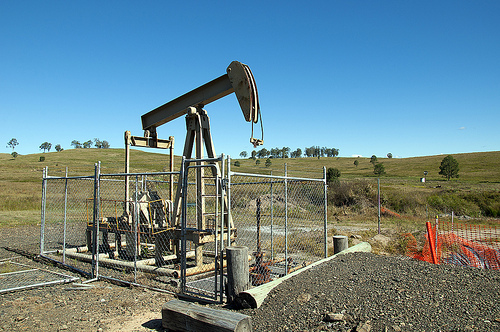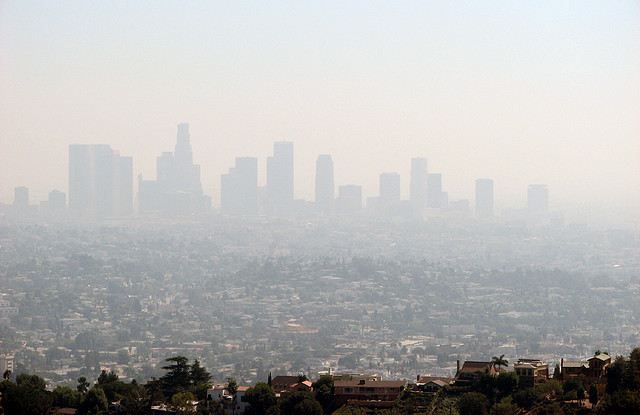 For more than 25 years, I’ve taught one of the core required courses in the Hazardous Materials Management Certificate program offered by University of California Santa Cruz Extension (UCSC-Ex). The program is intended to provide professionals with a solid foundation in the principles, regulations, and technologies required to manage hazardous materials and hazardous waste. In my course–the Regulatory Framework for Toxic and Hazardous Materials–I provide overviews of:
For more than 25 years, I’ve taught one of the core required courses in the Hazardous Materials Management Certificate program offered by University of California Santa Cruz Extension (UCSC-Ex). The program is intended to provide professionals with a solid foundation in the principles, regulations, and technologies required to manage hazardous materials and hazardous waste. In my course–the Regulatory Framework for Toxic and Hazardous Materials–I provide overviews of:
Audit, Compliance and Risk Blog
Hazardous Materials Commentary as Textbook for Professionals
Posted by Jon Elliott on Tue, Nov 17, 2015
Tags: Audit Standards, Health & Safety, California Legislation, Training, Environmental risks, Environmental, EHS, Greenhouse Gas, ghg, Hazcom, mact
How often do you read something that not only changes the things that you think about in life, it also changes the things you do?
Tags: Health & Safety, Environmental risks, Environmental, EHS, Greenhouse Gas, ghg, Hazcom
As global attention to climate change and greenhouse gas (GHG) emissions has grown over the past two decades, California has been one of the leading jurisdictions. This began with statewide planning efforts in the 1990s, designed to identify and quantify GHG emissions. After the turn of the millennium it expanded to significant control requirements imposed on targeted source categories—notably a 2002 law (AB 1493) requiring the world’s first GHG emission limits on motor vehicles.
Tags: Health & Safety, Environmental risks, Environmental, EPA, Greenhouse Gas, ghg, Hazcom
Although the pace of fracking projects rises and falls with changes in oil prices, regulation of fracking develops at slower and steadier rates. This month, the U.S. Bureau of Land Management (BLM) has completed nearly five years of rulemaking by revising its rules for oil and gas production from federal and Indian lands, to add requirements for hydraulic fracturing projects. These rules update and expand drilling permit rules in place for three decades. BLM reports that production from over 100,000 onshore oil and gas wells on federally-managed land accounts for 11 percent of U.S. natural gas supply and five percent of its oil, and that over 90% of wells currently being drilled on these land involve hydraulic fracturing.
Tags: Environmental risks, Environmental, EHS, EPA, Greenhouse Gas, fracking, hydraulic fracking
Have You Completed Your Hazardous Materials Management Plan?
Posted by Jon Elliott on Wed, Feb 25, 2015
A wide variety of federal, state and even local laws apply environmental, health and safety (EH&S) protection requirements to chemicals. EH&S compliance personnel are accustomed to complying with chemical management requirements imposed by the Environmental Protection Agency (EPA), Occupational Safety and Health Administration (OSHA), and their state equivalents.
Tags: Corporate Governance, Health & Safety, OSHA, California Legislation, Environmental risks, Environmental, EPA, Greenhouse Gas, ghg, Hazcom
Being a good citizen and composting food scraps really isn’t that hard if you live in a house. But what if you live in a condo? You might think it isn’t possible (or maybe you even think it isn’t worth it) to do your part and compost your organic wastes. Let me show you how to do it and why it’s worth it.
Tags: Health & Safety, Environmental risks, Environmental, EHS, Greenhouse Gas, ghg
EPA Proposes Stricter Standards For Ground Level Ozone in Ambient Air
Posted by Jon Elliott on Mon, Jan 19, 2015
The Clean Air Act (CAA) requires the Environmental Protection Agency (EPA) to create a list of air pollutants based on emissions that cause or contribute to air pollution that may reasonably be anticipated to endanger public health or welfare. EPA also sets air quality criteria for acceptable concentrations in ambient air, referred to as National Ambient Air Quality Standards (NAAQS).
Tags: Environmental risks, Environmental, EPA, Greenhouse Gas, ghg, climate change
U.S. And China Try To Change The Climate Change Conversation
Posted by Jon Elliott on Wed, Nov 26, 2014
On November 12, U.S. President Barack Obama and Chinese President Xi Jinping announced a bilateral agreement to cut greenhouse gas (GHG) emissions. Since these countries are the two biggest economies and largest emitters of GHGs – and are in a period when they seem to disagree about almost everything – this agreement has substantial symbolic value. But will it have much practical value?
Tags: Business & Legal, Environmental risks, Environmental, Greenhouse Gas, ghg
Strategic planners around the world are preparing “climate change adaptation plans,” designed to identify their organization’s key activities and missions, evaluate how climate change might affect them, and develop organizational changes designed to anticipate and adapt in ways that preserve the organization’s performance. On October 31, the US Environmental Protection Agency (EPA) issued its own Climate Change Adaptation Plan. EPA’s divisions (Water, Air and Radiation, etc.) and 10 regional offices also issued plans covering their activities. These Plans provides a collective model for multi-level organizational plans, and also tell organizations in the US what help to expect from EPA when they plan for their own adaptations to climate change.
Tags: Corporate Governance, Business & Legal, Environmental risks, Environmental, EHS, EPA, Greenhouse Gas, climate change
Important Clean Air Act (CAA) elements direct the US Environmental Protection Agency (EPA) to reduce emissions of hazardous air pollutants (HAPs). Unlike the conventional pollutants associated with regional problems such as smog or acid rain, HAPs represent a list of 187 specific air toxics that can be harmful in low concentrations in much smaller areas. HAPs are subject to tighter controls and lower permitting thresholds.
Tags: Business & Legal, Health & Safety, Environmental risks, Environmental, EHS, EPA, Greenhouse Gas, ghg, Hazcom, mact









